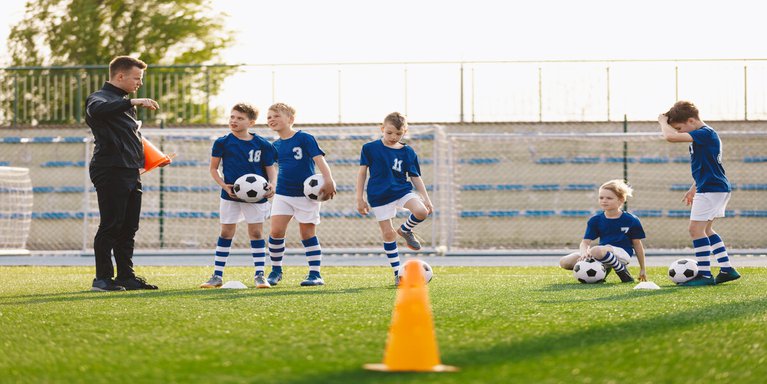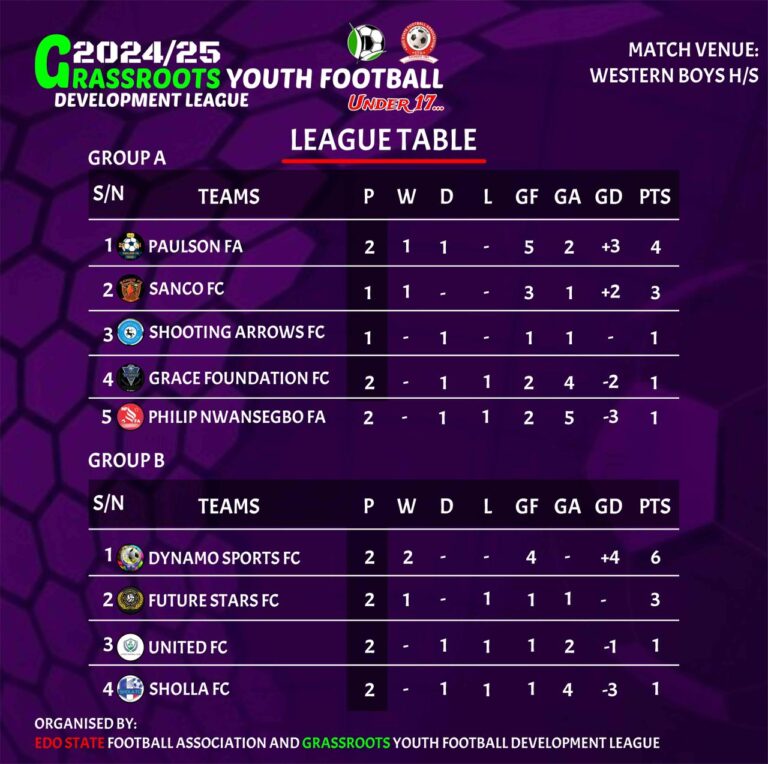“Youth Football Development in Italy: A Cradle of Talent and Tactical Innovation
Related Articles Youth Football Development in Italy: A Cradle of Talent and Tactical Innovation
Youth Football Development in Italy: A Cradle of Talent and Tactical Innovation

Italy, a nation steeped in footballing history and renowned for its tactical prowess, boasts a vibrant and multifaceted youth football development system. From the hallowed grounds of professional club academies to the grassroots initiatives scattered across the peninsula, Italy’s commitment to nurturing young talent is undeniable. This article delves into the intricate workings of youth football development in Italy, exploring its structure, key stakeholders, challenges, and the promising future it holds.
A Hierarchical Structure: From Grassroots to Glory
The Italian youth football system is structured in a hierarchical manner, mirroring the professional league pyramid. It can be broadly divided into three tiers:
-
Grassroots Football (Scuole Calcio): This is the foundation of Italian youth football, catering to children aged 5 to 12. Scuole Calcio (Football Schools) are typically run by local clubs, community organizations, or private academies. The emphasis at this stage is on fun, participation, and the development of fundamental footballing skills.
-
Youth Sector (Settore Giovanile): This tier encompasses age groups from 13 to 19 and is primarily managed by professional football clubs. The Settore Giovanile is divided into several age-specific categories, including:
- Under-19 (Primavera): Considered the highest level of youth football, Primavera teams often serve as a breeding ground for future first-team players.
- Under-17 (Allievi Nazionali): This age group focuses on refining tactical understanding and preparing players for the transition to the Primavera level.
- Under-15 (Giovanissimi Nazionali): At this stage, emphasis is placed on developing technical skills, tactical awareness, and physical conditioning.
- Under-14 and Below (Giovanissimi Regionali and Esordienti): These age groups continue to emphasize skill development and introduce basic tactical concepts.

-
Professional Football: The culmination of the youth development pathway, professional football represents the ultimate goal for aspiring young players. Italian clubs are increasingly integrating youth players into their first-team squads, recognizing the value of homegrown talent.
Key Stakeholders: A Collaborative Ecosystem
The success of Italian youth football development hinges on the collaboration of various stakeholders:
- Italian Football Federation (FIGC): As the governing body of football in Italy, the FIGC plays a crucial role in setting standards, regulating youth competitions, and providing coach education programs. The FIGC also oversees the national youth teams, which serve as a showcase for the country’s top young talent.
- Professional Football Clubs: Serie A, Serie B, and Serie C clubs invest heavily in their youth academies, providing young players with top-notch facilities, coaching, and educational opportunities. These academies are responsible for identifying, developing, and nurturing the next generation of Italian footballers.
- Local Clubs and Associations: Grassroots clubs and associations form the backbone of Italian youth football, providing opportunities for children of all backgrounds to participate in the sport. These organizations often work in partnership with professional clubs to identify promising young players.
- Coaches and Educators: Coaches play a vital role in shaping young players’ development, both on and off the field. Italian coaches are renowned for their tactical expertise and their ability to instill discipline and teamwork in their players.
- Parents and Families: Parents provide crucial support and encouragement to their children, fostering a love of the game and helping them navigate the challenges of youth football.
Curriculum and Methodology: A Focus on Tactical Intelligence
Italian youth football development is characterized by a strong emphasis on tactical intelligence, technical proficiency, and physical conditioning. The curriculum typically includes:
- Technical Training: Focuses on developing fundamental skills such as passing, dribbling, shooting, and ball control.
- Tactical Training: Emphasizes understanding formations, strategies, and game management.
- Physical Conditioning: Includes exercises to improve strength, speed, agility, and endurance.
- Mental Training: Focuses on developing mental toughness, resilience, and decision-making skills.
Italian coaches often employ a variety of training methods, including small-sided games, rondos, and tactical simulations, to create a challenging and engaging learning environment.
Challenges and Opportunities
Despite its strengths, Italian youth football development faces several challenges:
- Aging Infrastructure: Many Italian football facilities are outdated and in need of renovation. This can hinder the development of young players by limiting access to quality training grounds and equipment.
- Financial Constraints: Some clubs, particularly those in the lower leagues, struggle to invest adequately in their youth academies. This can lead to a lack of resources and opportunities for young players.
- Bureaucracy: Italian football is often criticized for its bureaucratic processes, which can make it difficult for clubs to sign and register young players.
- Competition from Foreign Leagues: The allure of higher salaries and better opportunities in foreign leagues can tempt talented young Italian players to move abroad at a young age.
However, there are also significant opportunities for growth and improvement:
- Increased Investment: The FIGC and the Italian government are increasingly investing in youth football development, providing funding for infrastructure improvements, coach education programs, and grassroots initiatives.
- Technological Advancements: The use of technology, such as video analysis and data analytics, is becoming more prevalent in Italian youth football, helping coaches to better understand and develop their players.
- Focus on Education: Italian clubs are increasingly emphasizing the importance of education, providing young players with opportunities to pursue academic studies alongside their football training.
- Globalization: The increasing globalization of football is exposing Italian youth players to different styles of play and cultures, broadening their horizons and enhancing their development.
Notable Success Stories: The Fruits of Labor
The Italian youth football system has produced a plethora of world-class players over the years, including:
- Paolo Maldini: A legendary defender who spent his entire career at AC Milan, Maldini is widely regarded as one of the greatest footballers of all time.
- Francesco Totti: A Roma icon, Totti was known for his exceptional technical skills, vision, and goal-scoring ability.
- Gianluigi Buffon: A Juventus legend and one of the greatest goalkeepers in history, Buffon has represented Italy at numerous World Cups and European Championships.
- Andrea Pirlo: A midfield maestro, Pirlo was renowned for his elegant passing, vision, and tactical intelligence.
- Roberto Baggio: A gifted attacker, Baggio was one of the most popular and talented players of his generation.
These players are a testament to the effectiveness of the Italian youth football system and serve as an inspiration to aspiring young footballers across the country.
The Future of Italian Youth Football: A Bright Horizon
The future of Italian youth football development looks promising. With increased investment, technological advancements, and a renewed focus on education, Italy is well-positioned to continue producing world-class footballers for years to come. The FIGC’s commitment to grassroots development, coupled with the dedication of professional clubs to their youth academies, ensures that young players will continue to have the opportunity to pursue their dreams of playing professional football.
Moreover, the increasing emphasis on tactical innovation and a more proactive, attacking style of play at the youth level suggests that the next generation of Italian footballers will be even more dynamic and versatile than their predecessors. This bodes well for the future of Italian football, both at the club and international levels.
In conclusion, youth football development in Italy is a complex and multifaceted system that has consistently produced world-class players. While challenges remain, the commitment of key stakeholders, coupled with a renewed focus on innovation and investment, suggests that the future of Italian youth football is bright. Italy’s dedication to nurturing young talent ensures that the nation will continue to be a force to be reckoned with in the world of football.

